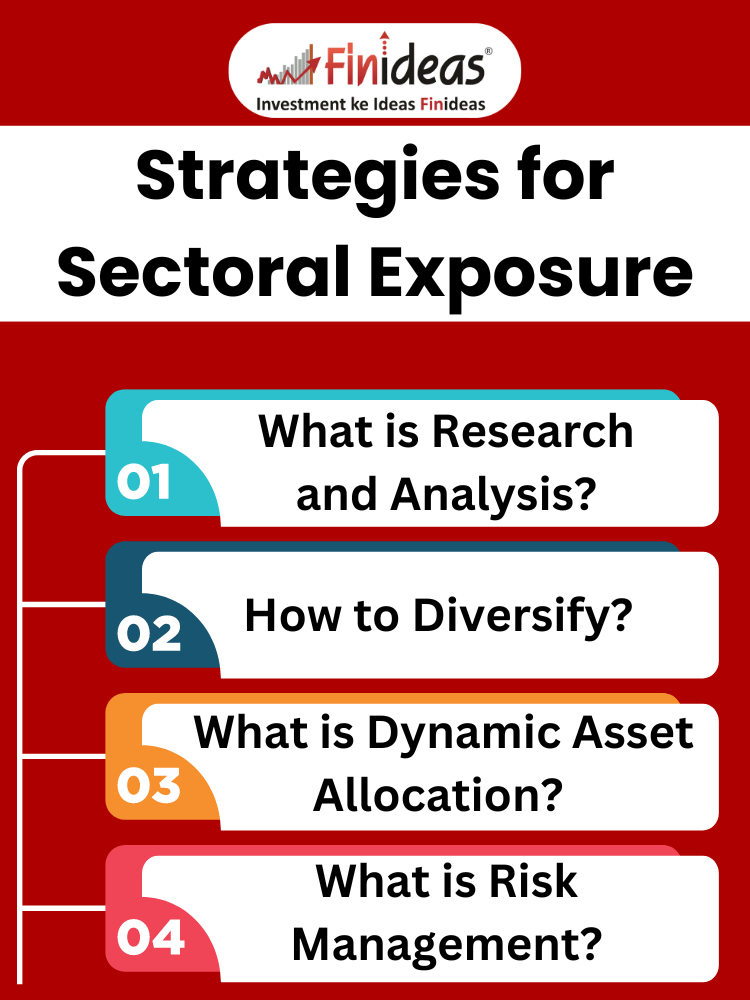Sectoral Exposure, Long-Term Index Portfolios, Risk and Reward
Introduction:
In the realm of investment management, constructing a well-diversified portfolio is paramount to mitigating risk and achieving long-term financial goals. One key aspect of portfolio diversification is sectoral exposure – the allocation of assets across various industry sectors. While diversification is often associated with spreading investments across different asset classes, such as stocks, bonds, and real estate, the distribution of investments within each asset class, particularly in equities, holds equal importance.
Why Sectoral Exposure Matters?
The performance of individual sectors can vary significantly over time due to shifts in economic conditions, technological advancements, regulatory changes, and other factors. Therefore, maintaining a balanced sectoral exposure helps investors reduce concentration risk and capitalize on opportunities arising from sector-specific trends.
How to Balance Risk and Reward?
Optimizing sectoral exposure involves striking a delicate balance between risk and reward. Concentrating too heavily in a single sector can expose a portfolio to undue risk if that sector underperforms or faces challenges. Conversely, spreading investments too thinly across sectors may dilute potential returns. Achieving the right balance requires a thorough understanding of each sector’s fundamentals, growth prospects, and correlations with broader market trends.
Strategies for Sectoral Exposure:
What is Research and Analysis?
Conduct in-depth research to identify sectors poised for growth based on macroeconomic trends, industry dynamics, and company-specific factors. Utilize fundamental analysis, market research reports, and economic indicators to assess sectoral attractiveness.
How to Diversify?
Allocate assets across multiple sectors to reduce concentration risk. Consider factors such as sector size, growth potential, and historical performance when determining the appropriate weightings for each sector within the portfolio.
What is Dynamic Asset Allocation?
Adopt a dynamic asset allocation approach that allows for periodic adjustments to sectoral exposure based on changing market conditions and investment objectives. Regularly rebalance the portfolio to maintain desired sectoral allocations and capitalize on emerging opportunities.
What is Risk Management?
Implement risk management techniques, such as stop-loss orders and position sizing, to mitigate downside risk associated with individual sectors. Monitor portfolio performance closely and take corrective actions as needed to preserve capital and optimize risk-adjusted returns. If you are someone who believes in risk management then you must know about Index Long Term Strategy.
Conclusion:
Sectoral exposure plays a crucial role in shaping the risk-return profile of long-term index portfolios. By carefully balancing sectoral allocations and staying attuned to market dynamics, investors can enhance portfolio diversification, mitigate risk, and position themselves to capitalize on sector-specific opportunities. Incorporating a disciplined approach to sectoral exposure management is essential for achieving long-term investment success.
How do you currently approach sectoral exposure in your investment portfolio, and what factors do you consider when determining sectoral allocations?
Do comment down below your thoughts and experiences!
Happy Investing!
This article is for education purpose only. Kindly consult with your financial advisor before doing any kind of investment.


